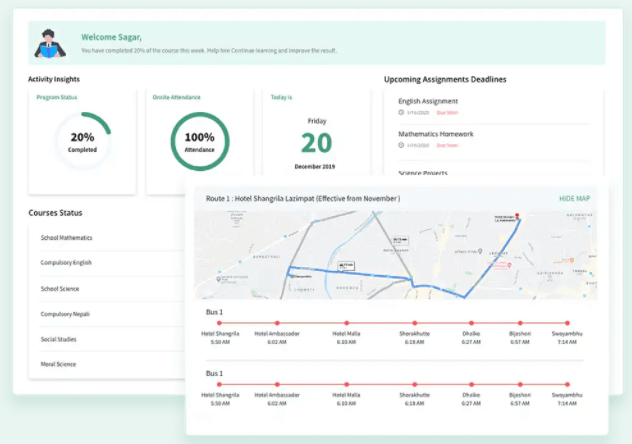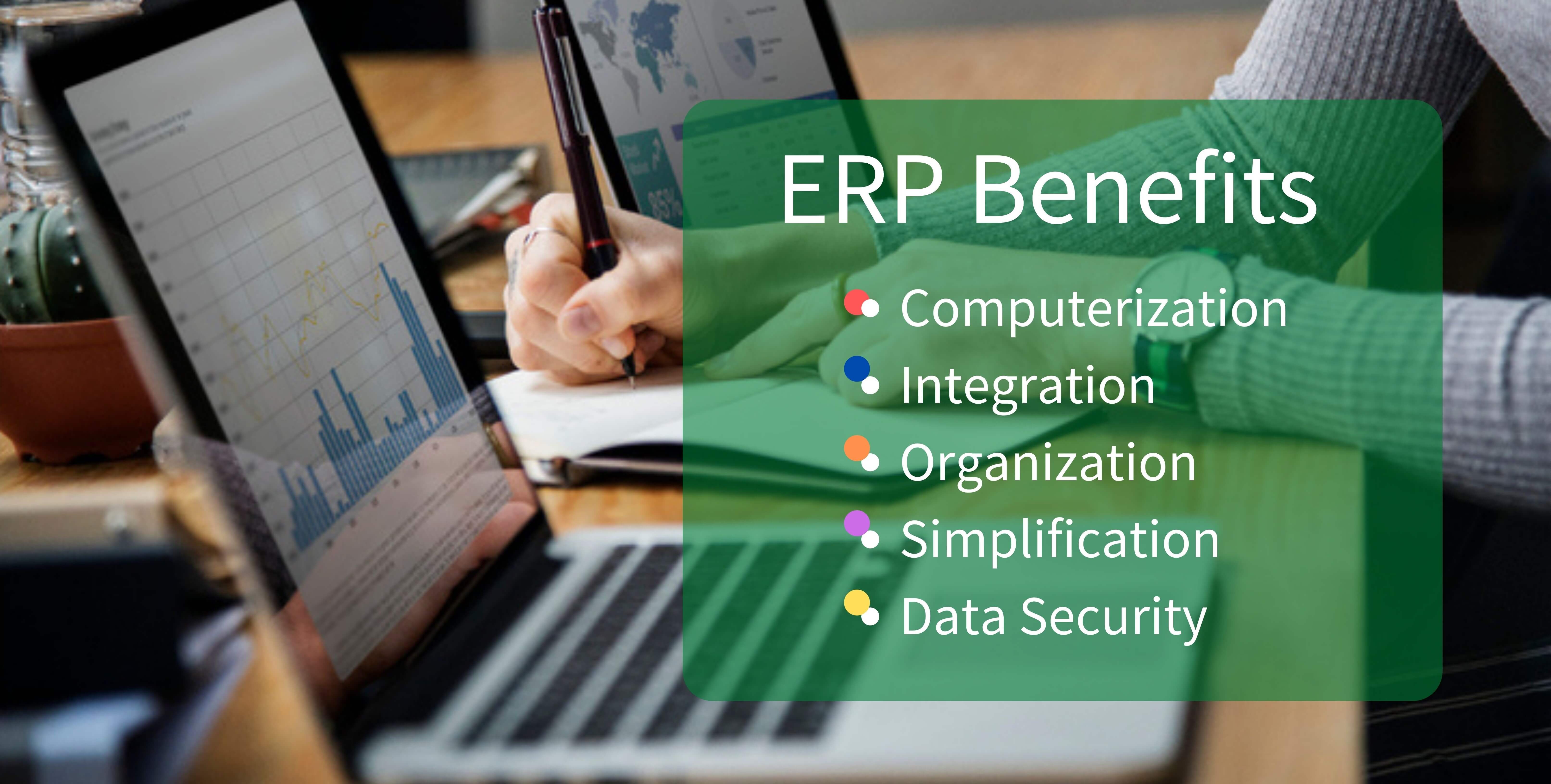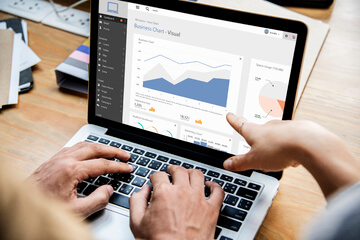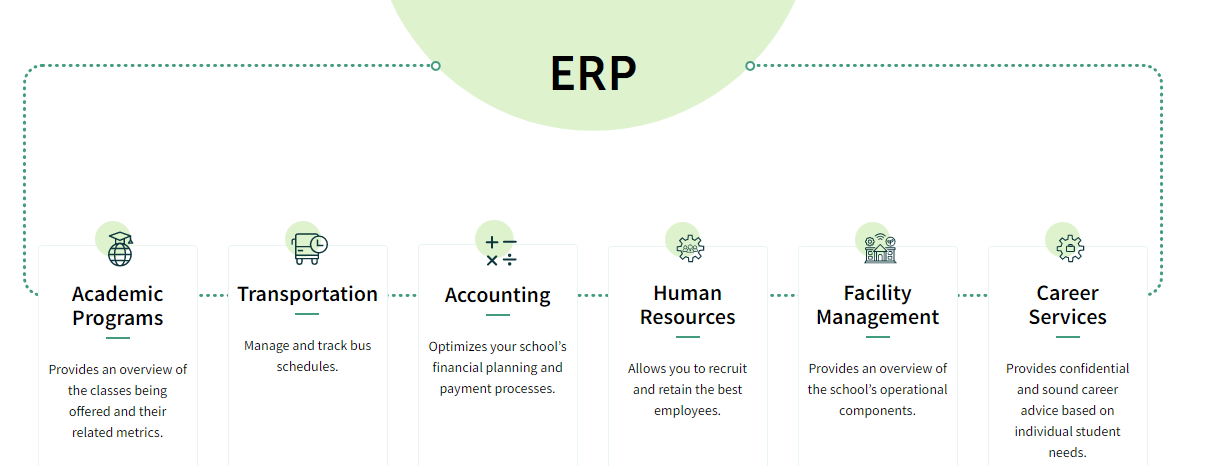In today’s world, information technology is actively used in many areas of life, including education. As such, eLearning/online learning courses are becoming increasingly popular, playing an important role in students’ cognitive and academic development. At the same time, modular software applications have also come into the picture when it comes to utilizing IT solutions to deal with multitudes of data and information related to students, teachers, administrations, and others. To navigate the storage and processing of such data, education institutions should implement complex-solution software, also known as Enterprise Resource Planning (ERP).
Not only does the ERP software save time, money, and effort, but institutions also benefit from a simplified education process. In addition to agility, the software also enables institutions to work efficiently by mitigating the administrative complexities of the education business. It also empowers institutions to manage end-to-end business requirements and make informed decisions.
What is Enterprise Resource Planning (ERP)?
Enterprise Resource Planning (ERP) is a modular application system software that helps businesses and institutions increase the productivity of human resources, finance, inventory, supply chain, and customer relationship management. ERP systems are enterprise-wide, helping businesses and institutions incorporate business practices that aim to replace legacy systems.
Properly storing and processing large amounts of data and information in the form of physical records, and maintaining them, such as keeping up with correct dates and times of the information, can be quite tedious, and prone to human errors. Moreover, education institutions also need to take care of student exams, new and follow-up student admissions, accounts, procurements of school goods, staff, and many other moving parts on top of the collection and management of data. Being a business-performance software, ERP helps streamline all such financial and data management operations and activities, making it a perfect digital solution.
How ERP Facilitates eLearning

Through the integration of various functions of the education institution, the Enterprise Resource Planning software also helps create a comprehensive system that modernizes the entire aforementioned process. Additionally, ERP systems also have integrated software architecture that simplifies the flow of information between whole functions in an enterprise. In other words, an ERP system replaces the module of each department using its own software to do its own work. Instead, all company/institutional data is stored in the ERP system’s single, relational database, called the Database Management System (DBMS).
Hence, the ERP, running on DBMS, makes it easier to generate reports that present comprehensible information on how the school/institution is doing overall, and where improvements can be made, how money can be saved, and how profit can be increased. By making the complete dataset available to everyone, the single database gives everyone a holistic view of the school’s performance.
You can also check our previous blog to read about another feature that facilitates eLearning: What is the Student Information System?
Benefits of Enterprise Resource Planning (ERP)

Computerization
Computerization and automation are some of the most valuable attributes of ERP software. Their primary function is to automate recurring tasks, such as financial management. ERP makes compiling a financial report easy. As the ERP automatically pulls specific data, searching for the information you need is hassle-free. ERP systems even allow the configuration of regular reports to show exactly the information you want in the way you want it shown, including charts and graphs.
Teachers can use ERPs to automate and update student status and course materials. ERP software can help teachers streamline the school-related process and make the learning process more comfortable. It does so by enabling the monitoring of student performance and behavior. Teachers can also update lesson records in real-time, ensuring students don’t miss tasks or assignments.
ERPs also ensure seamless cooperation between schools and parents. The school can provide transparent and structured information on every student through the ERP’s parent portal. Schools can use the ERP to keep parents updated by sending regular, automated emails and notifications. In addition, parents and guardians can use the ERP to manage online payments, check invoices, and stay up to date on fees. Some sophisticated ERP software also allows real-time tracking of student transportation.
Integration
Integration is the ability of one piece of software to interact with another. When different software from two or more departments works together to share data, the entire organization is more efficient. ERP software integration offers a unified view of information from different systems in real-time. It also increases collaboration between teams. For example, through the ERP, the financial accounting department works closely with the HR department.
Integrated ERP maintains data in real-time. As soon as the information enters the system, all departments are updated. Institutions can approach decisions with confidence, enabling them to take advantage of their data. Integration also helps reduce inefficient workflows through the centralization of information. Increased collaboration among employees also improves transparency and helps workflow visualization. Additionally, integrating ERP with project management software allows employees to see what their peers are working on.
Organization
ERP software helps schools stay organized, from department to department and within departments. The software helps departments avoid relying on papers prone to being misplaced or damaged. With a centralized database, an ERP organizes data more effectively. From managing timetables to fee collection, the system records, organizes, and traces everything, with very little room for errors.
Each integrated app shares information with all the others. This results in the automation of notifications, relieving employees of the burden. For example, when a vendor account is added to the system in one place, the ERP automatically adds it to all relevant apps. Integrated apps also enable timely notifications, from reminding parents of due payments to notifying teachers about unauthorized leaves to annual repairs of resources. The software creates alerts, reminders, and notifications in advance.
Simplification 
ERP simplifies the admissions process. Each application consists of a lot of information such as the applicant’s grades, specializations, and letters of recommendation. Manually determining eligibility by checking all these records is a time-consuming process. With the help of ERP, the student-admissions procedure becomes simple. The system displays all necessary components in one place, making them accessible to administrators and speeding up the accreditation process.
ERP also simplifies fee payments, previously at the behest of administrators. This process also requires, often manually, checking payment records to find out which fees are paid or outstanding. The ERP automatically segregates the information of collected fees under various categories. The system also tracks all components in the fee structure, such as tuition, admission fees, textbooks, and lab fees, among others.
As the software reduces manual tasks, it cuts person-hours and saves money. Schools can use the spared expenditures for other educational purposes. By providing swift access to all information, it helps management analyze the institution faster. This leads to well-informed decision-making through strategic data analysis.
Data Security
ERP software also presents many security features, which protect the organization from cyberattacks. The system also helps data recovery in cases of natural disasters or breakdowns. Through defined user access and regular audits, ERP systems offer effective security solutions. Of course, data security is only as adequate as the measures taken to ensure it. Thus, schools and universities should implement a strategy for ERP data security that is as watertight as a security strategy for any other business assets. Institutions should ensure that any ERP user has defined role-based access for all datasets, divided into three categories: read-only, export-permitted, and full access (including editing).
Schools should ensure users log on to the ERP with secure identifications and strong passwords. Using ERP’s ease of information analysis, administrators should also develop strategies to monitor data usage to look out for anomalies.
Conclusion
With ERP, educational institutions can solve the inefficiencies of fragmented data and improve problem resolution. Not only do ERP modules ease the flow of information to impact employee morale, but it also helps increase ROI for stakeholders through its central view of processes and progress. A robust ERP can deliver expected outcomes from easing the eLearning process to automating and optimizing the data management process.

You can click here to know more about Fuse Classroom’s ERP feature.
Fuse Classroom is an AI-enabled all-inclusive online education platform by Fusemachines, featuring online-live classroom experiences and tutoring, student-progress tracking, interactive online learning, and data-driven methods for an easy, effective, and optimized online learning experience. Embedded in Fuse Classroom are AI-assisted learning features, with attributes like the Student Status, Activity Recommendation, Automated Discussion Forums, Question Answering Systems, and a Chatbot Interface. The platform’s Learning Management System (LMS) and the Student Management System (SIS) also enable tracking academic and student information in one centralized location. Learn more about Fuse Classroom in our About section.

